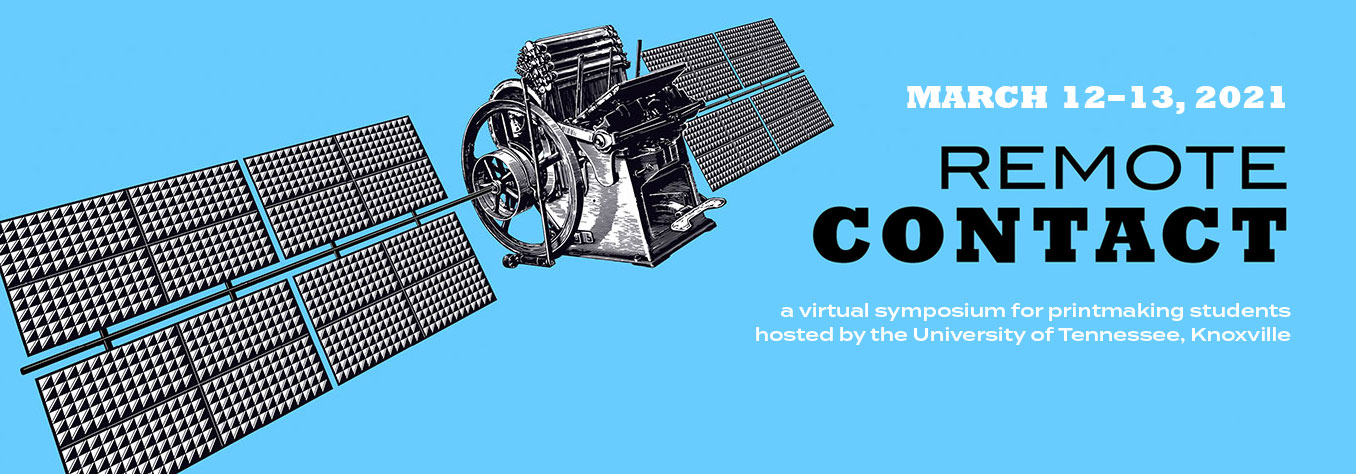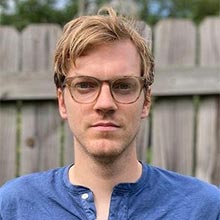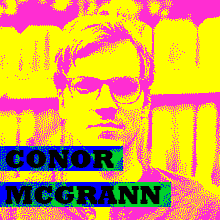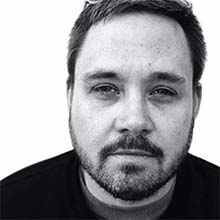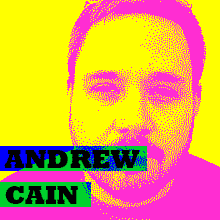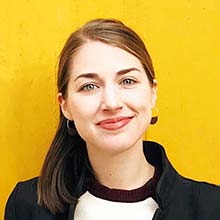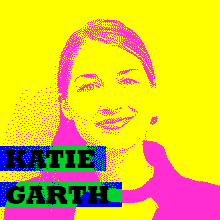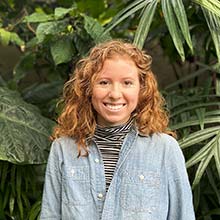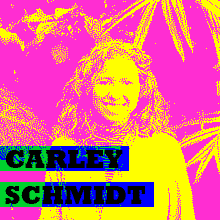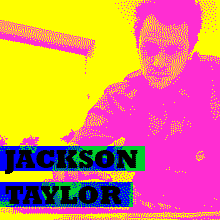
How and Why: Analog Meets Digital _saturday, march 13_14:30–16:00 (eastern us)_
Printmaking has always existed in the space between art and technology. This relationship is currently evolving at a rapid rate as artists continue to adopt and fold digital tools and processes into their art practice. This panel will explore the blurring between traditional analogue printmaking techniques and digital ways of working. Lockdowns have created issues of access to printshops and necessitated the adoption of digital making. This session asks not just how specific technologies are being repurposed, but why: is it a way to filter and recontextualize so that the original image is obscured; is it a way to connect people over an actual physical object during a pandemic; is it a path to connect and appropriate artifacts of a personal or family history? Most importantly, this panel hopes to explore what can be learned from the desire to combine analogue and digital processes through printmaking and how that reflects upon the current technological environment.
Conor McGrann, Panel Chair
MFA student, University of Tennessee, Knoxville
Conor McGrann came to the University of Tennessee from Pittsburgh, Pennsylvania. In 2009, he received a BFA in printmaking from Syracuse University. After college, he returned to his hometown to run the community printshop at Pittsburgh Center for the Arts. In this position, he was able to teach and talk to people of all ages about printmaking, while having a printshop to continue his art practice. On top of his work as a print tech, he maintained a studio in Pittsburgh’s Radiant Hall Arts Community. Conor is the director of the Student run Gallery 1010 and his work has been featured in shows recently at Artspace Gallery in Richmond, Virginia., American University in Washington, D.C., and Pittsburgh Center for the Arts. cgmcgrann-editions.com
Andrew Cain MFA student, Tufts University
"This Is only Temporary: An Exploration of Objects and Mediums from the Analog to the Digital." This Is Only Temporary is about the impermanence of all things. These single moments make up the memories that drive us to seek more, to experience all the things we can, so that we can live for these moments, that become memories, and how quickly it can all disappear. In this series of work, I explore the ideas of ephemerality creating drawings, converting them into digital compositions, laser engraving them into fragile paper removing parts of the paper shortening its life even more. I then recreate the vessels from the drawings in ceramic stamping the digital form of the drawings into these objects, photographing them, and then turning those photographs into screen prints, intaglio prints, and digital prints I further manipulate through the digital. Each time I take these objects and images further away from the original drawings they become further from our original idea, the memory of the object and why it was made becomes different, and the effort that goes into trying to remember the original idea for creation has become obsolete and we are left with these images declaring the act of remembering, and not the memory itself. I believe this idea of taking the multiple into different directions, the creation of objects and imagery from a source and manipulating them with mark-making derived from our origins as printmakers and how the multiple can be more than just an edition, but an exploration of what we are creating and discovering the why along the way.
Andrew Cain graduated from Queensland College of Art in Brisbane Australia in 2009. In 2013 He became an Instructional Technician for California State University Stanislaus in Turlock, CA close to his hometown Modesto, CA. During his time at CSU Stanislaus, he worked with local art originations and community groups, and galleries advocating for the arts and artists in the Central Valley of California. He is currently in his first year as a graduate candidate at the School and Museum School of Fine Art at Tufts. caincongart.com
Katie Garth recent MFA graduate, Tyler School of Art, Temple University
"Print, Fold, and Read: Creating the Quarantine Public Library." The Quarantine Public Library is a repository of one-page books made by artists, free for anyone to download, print and assemble—to keep or give away. Collaborator Tracy Honn and I co-founded the initiative in response to the loss of shared public art space highlighted by the COVID-19 pandemic. We realized this vacuum had activated new potential in one-sheet zines: works created for this form and published online, with the potential to be printed at home, could puncture the digital barrier to offer connection through a guided, haptic experience. By exploiting this simple format, providing a brief tutorial, and presenting a carefully curated cross-genre and cross-disciplinary collection, we facilitate individual interactions with printed works by established artists, writers, poets, and scholars, collapsing both the image/text and digital/analog binaries.
Katie Garth is a print-based artist in Philadelphia. Her interdisciplinary work explores tensions between the everyday lived experience and the sublime, and often employs language fragments and narrative forms. Garth received her MFA from the Tyler School of Art and a BFA from the University of Wisconsin–Madison. Her work has been shown internationally, and has appeared in the Washington Post and Print. She is currently an adjunct professor in drawing and independent publication. katiegarth.com
Carley Schmidt MFA student, University of Wisconsin-Madison
"History Through Technology." For the past year, my research has included digging through archives related to my family’s land allotments and grants, at the Cheyenne River Agency. In gathering these elements of the past, I developed a fondness toward their noticeable historical aesthetic. Some of the images were less than a century old— from the years of my grandmother’s childhood — but they appeared weathered, frail and sometimes illegible. I realized that while the physical documents existed somewhere in a government archive, I could only access them digitally. And I could only achieve the intended emotional response to the historical nature of the images through a digital process, executed via analogue printmaking.
Through this process of gathering, I have learned that sometimes technology is necessary to preserve the past, or at least a version of it. In this talk, I will speak about a recent series of collages I have made through digital printing and photo-based screenprints. I will note the distinct challenges of blurring analogue and digital, and how I have attempted to maintain the integrity of a historical narrative while taking a modern approach. I will address the seemingly divergent classifications of past and future, and how they can merge to speak to transgenerational narratives, and contemporary presentation of historical objects.
Carley Schmidt is a multi-disciplinary artist motivated by her relationship to landscape. She currently lives on ancestral Ho-Chunk land in Madison, Wisconsin, where she is an MFA Candidate in printmaking at the University of Wisconsin-Madison. Carley has shown in the U.S. and internationally, including appearances in Chicago, Milwaukee, and Bulgaria. She attended the Glasgow School of Art in 2015 and was the Artist-in-Residence at Ne’Na Contemporary Art Space in Chiang Mai, Thailand upon graduation from Gonzaga University in 2017. carleyschmidtart.com
Jackson Taylor MFA student, University of Iowa
"Filtered/Fractured." In my studio practice, I often find myself blurring the lines between printmaking, drawing, and photography. Utilizing pre-twenty-first technology, such as Xerox machines, scanners, and 1980’s photographic equipment, I hopscotch between traditional printmaking methodologies and seemingly outdated technologies to construct images. Many artists, for centuries, have employed simple technologies to aid them in image planning and production. This is nothing new. Although I will be discussing my fondness for antiquated tech and the multitude of applications it offers artists, especially printmakers working in lithography, this presentation will examine a phenomenon that I find unique to the intersection of printmaking and technology. It creates an in-between place where immediacy and latency work in tandem to create strange new logics that enable source imagery to be distorted, ideas to be disrupted, and meaning to oscillate.
Jackson Taylor was born and raised in rural Kentucky before receiving his BFA in Printmaking from the University of Louisville in 2017. He has exhibited work internationally, conducted printmaking workshops across the country, and in 2022 will be a visiting artist at the University of Akron, demonstrating waterless lithography procedures, in conjunction with the Mid America Printmaking Council biennial conference. His most recent work, through printmaking and drawing, offers a record of warped pastoral landscapes, snapshots of decay, and precarious situations that examine the still-dissolving rose-colored vignette that shrouded/shrouds the American South. Layering together sequences of disjunctive photographic references, the work surveys instances of nefarious nature, where religious extremism and exasperated cultures highlight the fragility and degradation of man. jacksontaylorprintmaking.com
